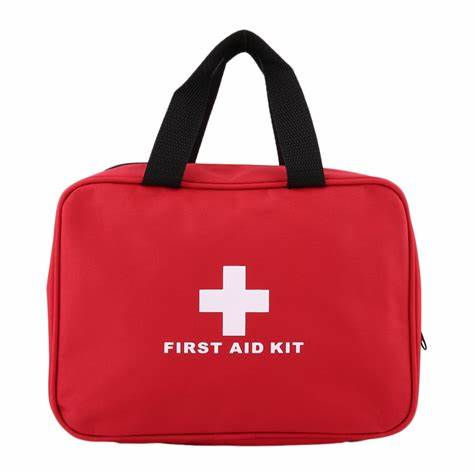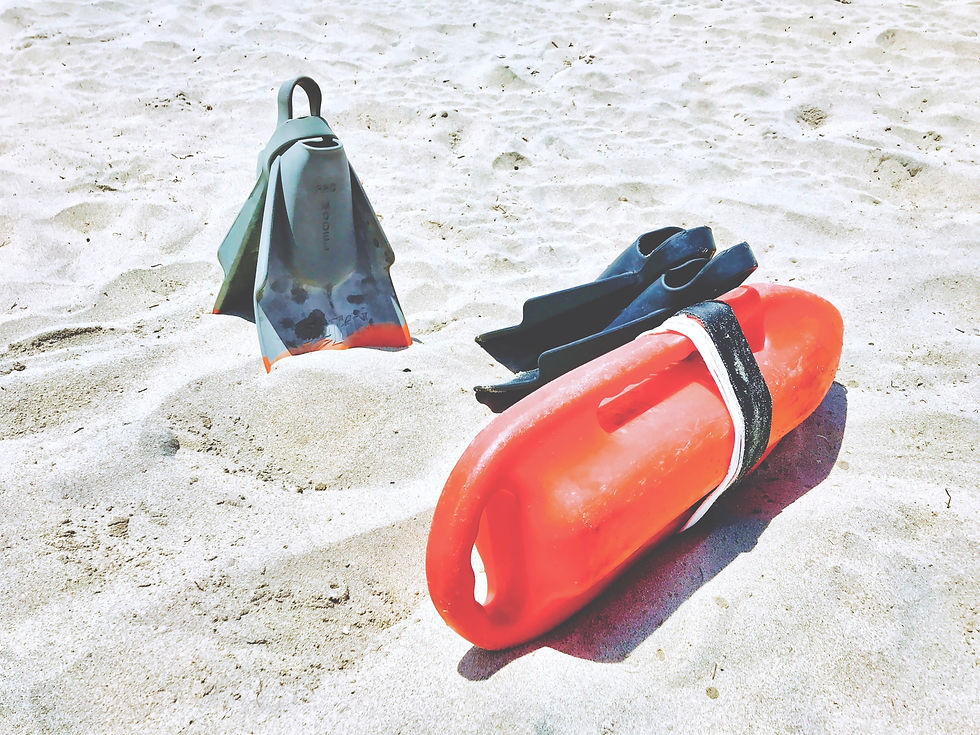A Lifeguard's equipment...
- lia369
- Mar 3, 2023
- 3 min read
Lifeguards play an essential role in ensuring the safety of individuals enjoying aquatic environments such as swimming pools, lakes, and oceans. Lifeguards have a variety of different methods and equipment to adapt for the variety of rescue scenarios that may arise. It is absolutely a critical component of their job to have the right equipment at hand to react to emergencies quickly and efficiently.
There is a large variety of equipment available, and each one has it's own purpose and use. Most of the following equipment you have seen at pools or on the beach but that not all there is of course!
Rescue Tubes: Rescue tubes are the primary tool that lifeguards use to rescue distressed swimmers. These tubes come in various sizes and shapes, but they all serve the same purpose, which is to provide buoyancy to both the lifeguard and the swimmer. They are designed to be throw to people in difficulty and aid them to float while the lifeguard drags them to safety. There are two main variations- rigid or flexible Rescue Torpedo Bouys (RTBs).
Whistle: A whistle is an essential tool that every lifeguard should have. The whistle is used to get the attention of swimmers and to signal other lifeguards in case of an emergency. The whistle should be loud enough to be heard over the sounds of the water, and bathers having fun. Different numbers of whistle blasts mean different things. It is always important to listen to what the lifeguards say.

First Aid Kit: A first aid kit is an essential component of any lifeguard's equipment. The kit should contain all the necessary supplies to treat minor injuries such as cuts, scrapes, and burns. It may also include supplies to assist in major injuries such as spinal injuries, deep wounds and head injuries. The first aid kit should also include a CPR mask, gloves, and other protective gear that the lifeguard may need to use when administering first aid.

Spine Board: A spine board is used to transport injured swimmers out of the water safely. The spine board provides immobilization for the spine and neck, which is essential when dealing with injuries that may affect these areas. The spine board is used by a team of lifeguards to extract a patient from the water while minimalizing movement.

Rescue Fins: Rescue fins are used to increase the lifeguard's speed when swimming to rescue a swimmer in distress. These fins are made of durable materials such as rubber or silicone, and they should fit snugly around the lifeguard's feet. The fins should be comfortable to wear for extended periods and should provide enough propulsion to allow the lifeguard to swim quickly through the water but not impede rescue time to fit on. These are mainly used in open water or ocean environments.

Binoculars: Binoculars are an essential tool that lifeguards use to monitor the pool or beach from a distance. The binoculars should have a wide field of view to allow the lifeguard to monitor a large area. They are most commonly used at the beach and open water stations.

Rescue crafts: There are a variety of rescue crafts that lifeguards use in order to reach a casualty quickly and efficiently. These range from Rescue Boards to Jeski's and Resue boats (IRBs). These crafts don't only act as a secure platform for casualties but can provide aid for a number of casualties at the same time as a secure object to hold onto for flotation or can even be used for resuscitation if needed while getting back to shore.
It is part of a Lifeguards job to also ensure that their equipment is well-maintained and replaced regularly if damaged or broken to ensure that it is in good working order. By having the right equipment and training for the use thereof, lifeguards can provide a safe and enjoyable experience for swimmers of all ages in aquatic environments.











Comments